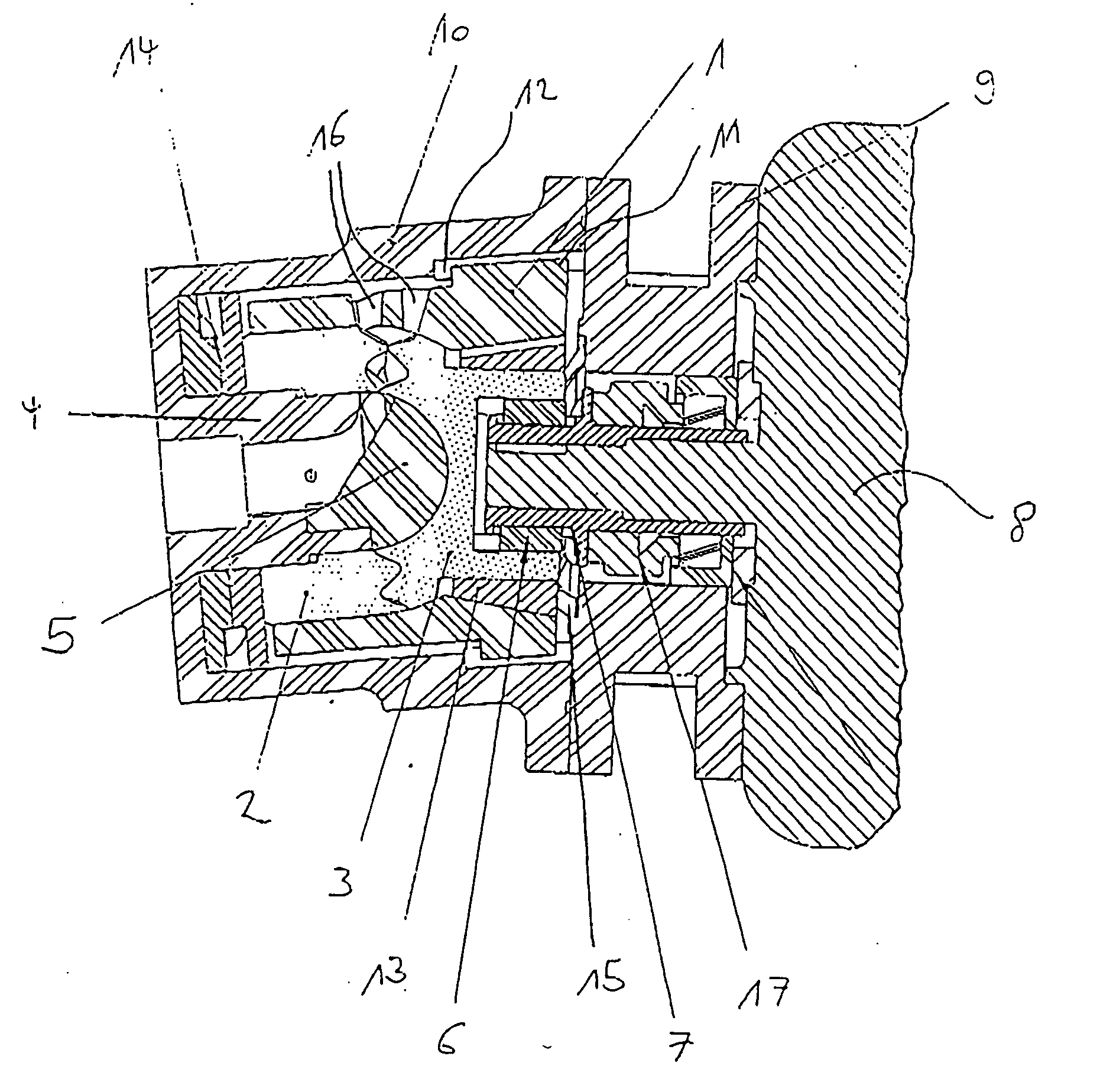Rotary piston machines comprising a displaceable inner housing
a technology of displaceable inner housing and rotary piston machine, which is applied in the direction of machines/engines, rotary/oscillating piston pump components, liquid fuel engines, etc., can solve the problems of disproportionate increase in the manufacturing cost of precise, rotor relative to one another increase exponentially, and it is not possible to reduce gap losses at economically justifiable costs. , to achieve the effect of reducing gap losses
- Summary
- Abstract
- Description
- Claims
- Application Information
AI Technical Summary
Benefits of technology
Problems solved by technology
Method used
Image
Examples
Embodiment Construction
[0008] The rotors of a rotary piston machine, the shut-off part 2 and the power part 3, engage one another at an axial angle, so that chambers are formed between the shut-off part 2 and the power part 3. The chambers have volumes variable over the angle of rotation for conveying fluids or gases.
[0009] With a borehole accommodating the shank 4 of the control head 5, the shut-off part 2 is disposed rotatably about the longitudinal axis of the shank 4. On the side facing the shut-off part 2, the power part 3 has a central, spherical recess for accommodating the control head 5.
[0010] By means of an adjusting spring 6 and a shaft extension 7, the shank of the power part 3 is fastened on the shaft of a motor 8. The housing 10 is fastened to the motor 8 over a flange 9.
[0011] The two rotors (shut-off part 2 and power part 3), which are fixed in their position by the shank 4 of the control head 5 and the shaft of the motor 8, are surrounded by an inner housing 1. The inner housing 1 can ...
PUM
 Login to View More
Login to View More Abstract
Description
Claims
Application Information
 Login to View More
Login to View More - R&D
- Intellectual Property
- Life Sciences
- Materials
- Tech Scout
- Unparalleled Data Quality
- Higher Quality Content
- 60% Fewer Hallucinations
Browse by: Latest US Patents, China's latest patents, Technical Efficacy Thesaurus, Application Domain, Technology Topic, Popular Technical Reports.
© 2025 PatSnap. All rights reserved.Legal|Privacy policy|Modern Slavery Act Transparency Statement|Sitemap|About US| Contact US: help@patsnap.com


